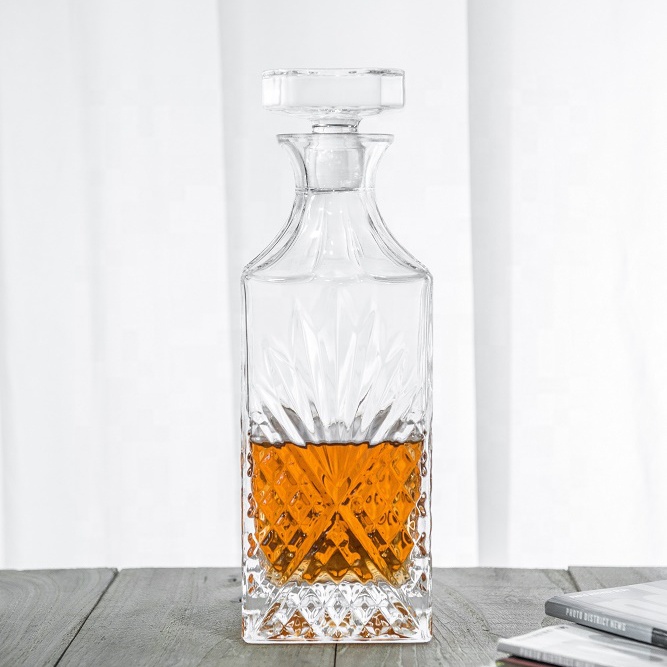Sake vs. Shochu vs. Soju: The Foremost Variations
Sake, shochu, and soju are all distinctive drinks with their very private distinct traits and glued followings. However these umami-forward alcoholic drinks share elements of historic earlier and a few comparable manufacturing processes, identical to the utilization of cultivated fermentation starters.
They’re furthermore generally confused for each other contained in the U.S. market, partly as a result of liquor retailers grouping the similar-sounding merchandise subsequent to at least one one completely different on cabinets. We consulted Don Lee, a veteran bartender of institutions like Current Circumstances, PDT, and Dying & Co, amongst others, and an educator for the Japanese Sake and Shochu Makers Affiliation, to assist us break down the similarities and variations.
Brewing vs. Distillation and the Significance of Koji
“By way of the large image, soju and shochu are distilled merchandise, whereas sake, for primarily primarily probably the most half, is a non-distilled, brewed product,” explains Lee.
Japanese sake and shochu are characterised by the addition of whoa cultivated mould that’s used contained in the brewing course of. (Typical Korean soju is decided by an equivalent fermentation starter often known as i’m going to present youthough it perhaps isn’t utilized in quite a few the fashionable soju you’re further liable to uncover.)
Although sake is brewed like beer, the rice utilized in sake-making doesn’t convert starches into sugars by itself like barley does. Instead, sake brewers rely on koji to assist saccharify the rice, or flip the starches into fermentable sugars. Along with being a key a part of the brewing course of for sake, koji lends a specific umami fashion profile.
“The koji course of itself introduces completely completely different flavors that the tactic of turning starches into sugars doesn’t create,” says Lee. “It provides one completely different layer of savory umami fashion that you just simply don’t get from merely malting.”
Shochu is made when the fermented rice-and-koji combination is distilled. “The fundamental strategy of taking a rice, permitting it to get moldy, giving it the enzyme that breaks starch into sugar, after which the yeast altering that sugar into alcohol—that brewing course of is sake,” says Lee. “After which if you happen to occur to happen to take that, and as well as you distill it, you may have soju and shochu.”
What complicates factors is that shochu and soju aren’t at all times made with rice.
“Shochu may be comprised of 1 factor—not solely rice, nevertheless furthermore barley, buckwheat, candy potato, frequent potato, inexperienced tea, seaweed, milk, carrots, tomatoes, chestnuts, no matter you presumably can bear in mind,” says Lee. “Inside the event chances are you’ll flip it into alcohol and distill it, it’s shochu, so long as you [distill] it with koji.”
Soju, inside the meantime, is often industrialized and may be comprised of any variety of base parts.
Liquor.com / Sabrina Maiden
Sake
Sake is a brewed Japanese alcoholic beverage comprised of fermented rice, water, and koji. It is going to usually have the alcohol diploma of a wine or beer, from 5% ABV on the decrease finish to twenty% ABV on the upper finish, with most bottles falling someplace in between.
As with wine and beer, sake can exhibit numerous traits. “It may [taste like] one factor from a dry, high-acid white wine like a gewurztraminer, to at the least one issue super-sweet and funky, like a pedro ximénez sherry,” says Lee.
Sake is often labeled utilizing phrases that designate its parts, model, and the proportion of its rice that’s polished, or stripped of its outer hull. When a sake is made solely from rice, water, yeast, and koji, it’s commonly known as junmaiwhich often means “pure rice sake.” These bottlings which have a small quantity of distilled alcohol added (not more than 10% of your complete quantity) are often known as honjozo. Although there are adherents to each sorts of sake, choice is a matter of vogue. An extra, generally uncared for sophistication is nigorior unfiltered sake.
“Broadly talking, nigori sake goes to be sweeter,” says Lee. “Honjozo is often full and wealthy.”
Sake Quick Knowledge
• Brewed fermented rice beverage
• Makes use of koji contained in the brewing course of
• Made in Japan
• ABV of a wine or beer
The widespread phrases which are used to convey rice polish ratio are daijingo (50% polish or additional) and ginjo (60% polish or additional). However though a higher polish ratio generally comes with a higher price ticket, Lee cautions in route of relying solely on the polish to guage sake high quality.
“For a extraordinarily low worth mass-produced product, [a higher] share of the sharpening supplies you a dryer and cleaner profile,” says Lee. Nevertheless, on the mid- to excessive finish, brewers can purchase traits like dryness, sweetness, and acidity by the use of a wide range of strategies. “Often the issues we affiliate with fashion are literally impurities,” he says.
Widespread Sake Classes
Junmai: “Pure rice sake,” made solely from rice, water, yeast, and koji
Honjozo: Sake all through which a small quantity of alcohol is added
Daijingo: 50% polished rice or additional
Ginjo: 60% polished rice or additional
Nigori: Unfiltered Sake
Liquor.com / Sabrina Maiden
Shochu
Shochu is a distilled Japanese clear spirit which can be comprised of numerous base parts, together with rice, candy potatoes, and barley. Like sake, it accommodates koji contained in the saccharification course of. It may very well be bottled with a wide range of ABV, from 17–27% on the low finish to 38–45% on the acute finish.
The overwhelming majority of shochu exported to the U.S. is labeled honkakusays Lee, which denotes commonplace processes identical to the utilization of single pot distillation. As such, you presumably can often depend on a optimistic diploma of top of the range when deciding on a shochu contained in the U.S.
“In selecting a shochu, there are such a lot of issues,” says Lee. “Big image is, what’s it comprised of? Within the occasion you need to be exact nerdy about it, you presumably can say okay, is it black koji or white koji or yellow koji? Does it use excessive stress distillation, or is it frequent partial distillation, which is able to create additional floral, fragrant compounds? What proof are you distilling it to?”
Shochu Quick Knowledge
• Clear distilled liquor which can be comprised of quite a few base parts, together with rice, barley, and candy potatoes
• Distilled with koji, which provides umami fashion
• Made in Japan
• ABV can vary from spherical 17–45%, from that of a fortified wine to that of a spirit
Upwards of 99% of shochu is made on Japan’s southernmost island of Kyushu, says Lee, who explains that distillation superior from the necessity to guard a brewed beverage in heat temperatures so it wouldn’t spoil. “Inside Kyushu, it’s not a monolith, it’s an island of varied temperatures and soil varieties,” he says.
The kind of base ingredient used and the distinctive terroir of the place it’s grown can wildly influence the flavour profile of the shochu. Barley, as an illustration, imparts a specific earthy phrase, says Lee. Shochu could also be usually made with a novel sort of koji than sake, which makes use of yellow koji. The black and white koji which are generally used to make shochu are comparatively further acidic, nonetheless this acidity is eradicated by the use of the distilling course of.
Liquor.com / Sabrina Maiden
Soju
Soju is a transparent distilled Korean liquor that many take a look at to vodka as a result of its comparatively clear, impartial profile. The spirit dates to Thirteenth-century Korea, when it was historically comprised of rice, nonetheless beginning inside the 20 th century it superior correct proper into an additional industrialized beverage.
“Inside the event you went as soon as extra in time to pre-Imperial Japan, shochu and soju had been the same concern,” says Lee.
Nevertheless, Japanese colonization of Korea contained in the early 1900s stripped Koreans of quite a few their customized. “It was unlawful to talk Korean, it was unlawful to positioned on Korean clothes, and it was unlawful furthermore to supply alcohol in Korea,” says Lee.
Then, by the use of the Korean Battle, rice distillation was banned, giving rise to soju comprised of varied grains like wheat and barley. In the intervening time, solely a handful of monumental corporations in Korea take care of the soju commerce, says Lee. Conversely, in Japan, shochu has remained a small and principally family-owned commerce, with an entire bunch of distilleries producing a singular product.
Soju Quick Knowledge
• Clear distilled liquor historically comprised of rice
• Made in Korea
• Most soju exported to the U.S. is mass-produced and has a comparatively low ABV for a distilled spirit, spherical 20%
Trendy-day soju can be distilled from base parts together with cassava, sugar beets, and yam, and certain don’t use nuruk (koji’s Korean counterpart) contained in the distillation course of. A complete lot of the soju imported into the U.S. is lower-ABV, spherical 20%, whereas imported shochu will present a wide range of proofs.
Soju could be very stylish at Korean consuming places, partly on account of Korean-American restaurant house owners lobbied to label soju as a wine or beer contained in the Nineteen Eighties so it may very successfully be served with meals—one completely different concern that has contributed to the perceived distinction between shochu and soju contained in the U.S.
Though commonplace soju stays unusual, Lee notes that some producers in Korea try to make soju as their ancestors did, with a updated contact. “There are a handful of people who have tried to recreate this misplaced heritage,” he says.




:max_bytes(150000):strip_icc()/LIQ_Edit-VS_CalvadosCognacArmagnac_Facebook-1200x628-7487affe540d4b0d8bd4e212a86889e3.jpg?w=1200&resize=1200,0&ssl=1)
:max_bytes(150000):strip_icc()/versus_pernod-ricard_1200x628-d771c3f6e8044907a06f708cf05caadd.jpg?w=1200&resize=1200,0&ssl=1)
:max_bytes(150000):strip_icc()/LQR_Edit-ScotchVSAmericanMalt_Facebook-1200x628-7d2a370ee27247aab02285e711fe7b55.jpg?w=1200&resize=1200,0&ssl=1)